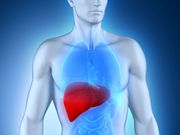HOMA2-IR independently linked to HCC in patients without overt metabolic abnormalities
FRIDAY, Nov. 18, 2016 (HealthDay News) — Insulin resistance assessed by homeostasis model assessment index (HOMA2-IR) correlates with the risk of hepatocellular carcinoma (HCC) in patients with chronic hepatitis B virus (HBV) infection, according to a study published online Nov. 11 in the Journal of Gastroenterology and Hepatology.
Jung Hee Kim, from the Sungkyunkwan University School of Medicine in Seoul, South Korea, and colleagues examined whether HOMA2-IR can stratify HCC risk in a retrospective cohort of 1,696 patients with chronic HBV.
The researchers found that 1.4 percent of patients developed HCC. The incidence rate of HCC was higher for patients with higher versus lower HOMA2-IR values (1.7 versus 0.5 percent for HOMA2-IR >1.200 versus ≤1.200; P = 0.009). In a multivariable model adjusted for age, sex, cirrhosis, and HBV DNA levels, HOMA2-IR was a significant factor associated with HCC development (hazard ratio, 3.25; 95 percent confidence interval, 1.13 to 9.31). The correlation was attenuated after further adjustment for obesity, hypertension, and diabetes (hazard ratio, 1.93; 95 percent confidence interval, 0.57 to 6.51). In patients without overt metabolic abnormalities (hypertension, diabetes, and metabolic syndrome), but not in those with overt metabolic abnormalities, HOMA2-IR was an independent factor associated with HCC.
“HOMA2-IR was associated with the risk of HCC, indicating that HOMA2-IR can be a useful tool for stratifying the risk of HCC in chronic HBV-infected patients, particularly in patients without overt metabolic abnormalities,” the authors write.
Full Text (subscription or payment may be required)
Copyright © 2016 HealthDay. All rights reserved.








